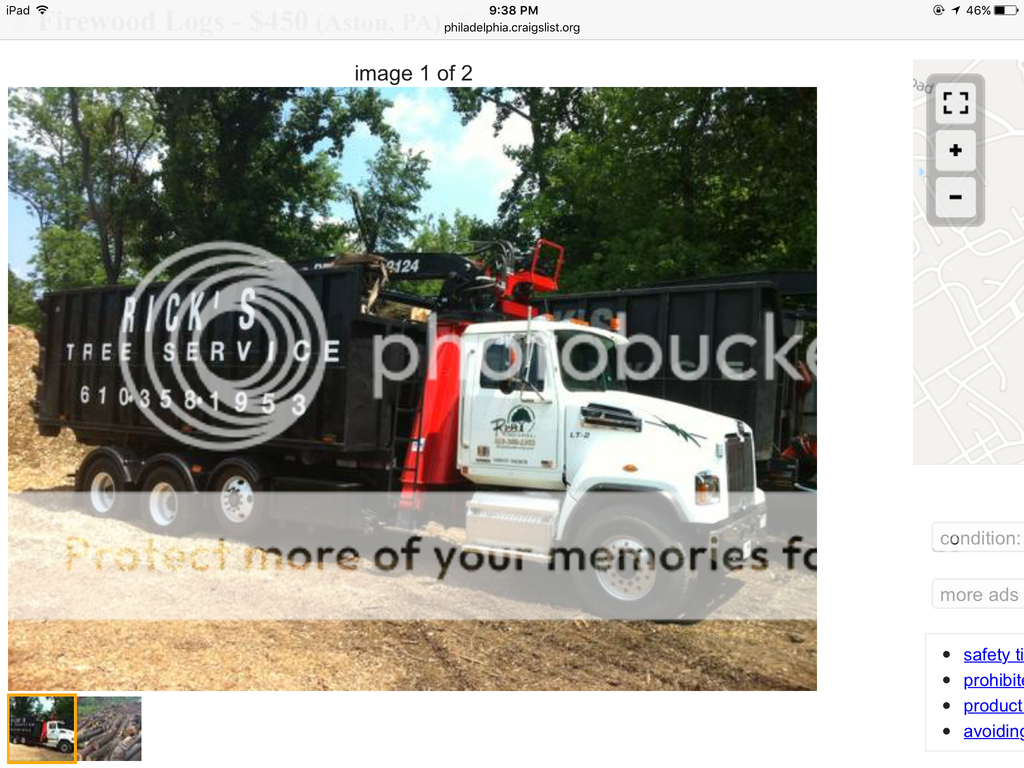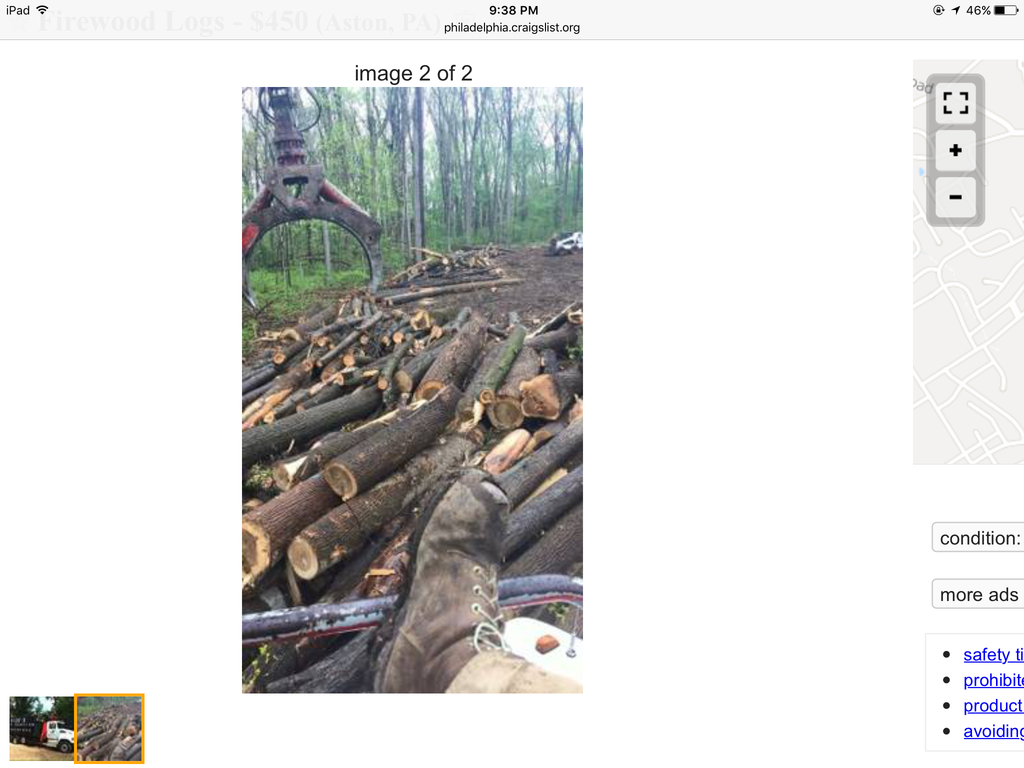I'll jump in for laughs and giggles, plus it's lunch time (was) and it's raining out.
And let me begin by saying, a cord is not a cord.
Here are my assumptions in this case: the load is hard wood; hardwood = 5,800 lbs green; a cord of wood is 30% air, or 90 cu. ft of wood per 128 cu. ft. per cord.
Here's my math:
42 cu. yds. = 1134 cu. ft.
Consider a solid block of wood as maximum load.
1134 cu. ft. = 70% of possible cordage.
1134/70 x 100 = 1620 cu. ft./128 cu. ft. = 12.65 cord
Now you can simply estimate the percent volume of wood vs air in the box, and multiply by 12.65 cords.
8 to 10 cord load is implied. I buy 20 cord loads, so from experience I'm throwing out 10 cords, but lets do the math for 10 cord.
A cord of unsplit wood is (estimated) 90 cu. ft.
90 cu. ft. x 10 cord = 900 cu. ft. in a box of 1134 cu. ft. 900/1134 = 79% wood; and 5,800 lbs x 10 = 58,000 lbs tare weight. (this assumes the weight of green oak)
View attachment 502567 View attachment 502568
There is more to this: I buy 20 cord loads. Cut and split = on average 15 cords. So looking at this truck, there is 10 cord on the truck, and ten cord on the pup. But cut and split, that volume translates to seven and one half cords each. A cord is not a cord.
Now compare this truck to the one pictured in post #4.
My guess is 4 1/2 cord cut, split, stacked...plus or minus. $111. per cord
Five cord of good wood is worth way more than ten cord of crap. In other words, it is more about what your getting, not how much your getting, unless your feeding an outdoor boiler.
The last load I got from a tree service the driver estimated four cord. I estimated half of that. He left smiling. Cut/split/stacked... five, 1/3 cord, racks plus a little... The next load he brought over, he left with it too.
View attachment 502580












